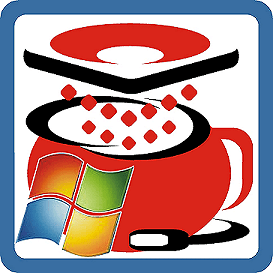There is a mostly unreported and unrecognised ongoing attack on our research institutes, commerce and infrastructure, massively damaging our successes in the western world.
UC Cert, the United States Computer Emergency Team released an update (TA17-117A) last week from the The (US) National Cybersecurity and Communications Integration Center (NCCIC) “Intrusions Affecting Multiple Victims Across Multiple Sectors“, this recent one details an ongoing sophisticated attack on wide ranging industries. These attacks do not end in the male enhancement spamming campaigns, website sites defaced with ads for fake designer goods or stolen credit cards that all become apparent soon after the attack.
They are silent, deeply embedded thefts of intellectual property, of which the victims are unaware for maybe years if at all.
They do not identify the likely bad actors in the TA17-117A, which they rate as “Medium Risk”, but I would hazard a guess that they all have the same source as this attack that devastated the National Research Council a few years ago, the repercussions are still ongoing. I don’t know the reliability of Newt Gingrich figure of the losses being $360 Billion per annum last year, Trump alluded to the threat from China during his campaign, but the rhetoric has always been more about political controls, “we’ll send Governor Branstad over to tell them to stop”.
The summary of the TA17-117A update could simply be, they are deeply embedded in your networks, it’s very difficult to identify how and where, even more difficult to remove them. And some broad recommendations on how to prevent reinfection.
Unfortunately while TA17-117A gives detailed advice on what to look for, they do not give much advice on how to look for it, which I believe the majority of network and server administrators on the frontline would need guidance on, there are a large number of suites of computer forensics would be useful. But none as simple and complete as Microsoft COFEE (I would provide an official link, but there isn’t one), this is only available to law enforcement “from NW3C at www.nw3c.org or by contacting INTERPOL at COFEE@interpol.int”. Like WikiLeaks I am not to happy about this withholding of such a useful tool, It would probably be very simple to write further tools that could analyze the data collected by COFEE to flag any intrusion related to this and other advisories.
While the advisories themselves are great, in many cases they will be too little too late, it would be great if network and server admins had access to better tools without having to get as far as needing to report a crime.
Actually blocking these attacks, the advisory points you in the right direction, and methods will differ vastly depending on the environment, costs associated with risk would have to be taken into account so would also vary what controls can be put in place, but at a time when we are still having trouble getting users to encrypt their data and devices, and to use a password manager, we could all be doing more with general cyber security education, the potential damage to our economies from these attacks are really astronomic. $360bn p/a is just the cost to the US economy, that’s 60 times the amount of the funding provided to the National Cancer Institute, which fit the typical profile of the targets of these attacks, or half the amount spent by the US military as a whole annually.
Others have told me that the greatest risk to business today is ransomware, while the effects are horrid (seen it too many times) if you are unprotected, they are generally quite limited in the damage that they cause, and very easy to mitigate by never clicking on unknown links, having a script blocker, and keeping regular backups.
